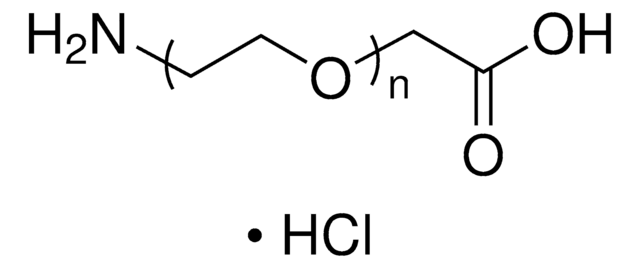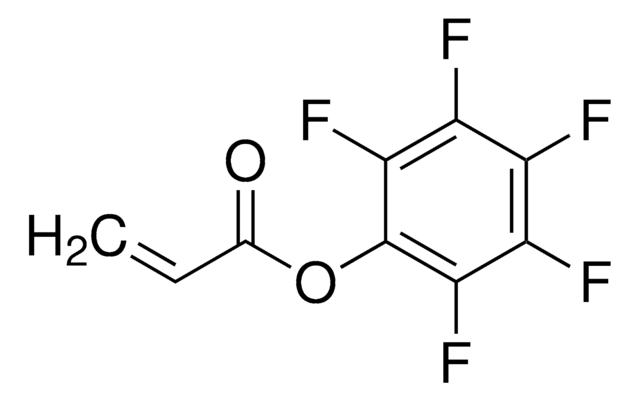757896
Poly(ethylene glycol) 2-aminoethyl ether acetic acid
average Mn 3,500, cross-linking reagent amine reactive, cross-linking reagent carboxyl reactive
Synonym(s):
Polyethylene glycol, Amine-PEG-carboxylic acid, Amino-PEG acetic acid, AminoPEG carboxylic acid, Aminopolyoxyethylene acetic acid
About This Item
Recommended Products
Product Name
Poly(ethylene glycol) 2-aminoethyl ether acetic acid, average Mn 3,500
form
solid
Quality Level
mol wt
PEG average Mn 3,400 (n~77)
average Mn 3,500
reaction suitability
reagent type: cross-linking reagent
reactivity: amine reactive
reagent type: cross-linking reagent
reactivity: carboxyl reactive
mp
55-61 °C
Ω-end
amine
α-end
carboxylic acid
polymer architecture
shape: linear
functionality: heterobifunctional
storage temp.
−20°C
Looking for similar products? Visit Product Comparison Guide
Related Categories
General description
Storage Class Code
11 - Combustible Solids
WGK
WGK 3
Choose from one of the most recent versions:
Already Own This Product?
Find documentation for the products that you have recently purchased in the Document Library.
Customers Also Viewed
Articles
The use of hydrogel-based biomaterials for the delivery and recruitment of cells to promote tissue regeneration in the body is of growing interest. This article discussed the application of hydrogels in cell delivery and tissue regeneration.
Devising biomaterial scaffolds that are capable of recapitulating critical aspects of the complex extracellular nature of living tissues in a threedimensional (3D) fashion is a challenging requirement in the field of tissue engineering and regenerative medicine.
Our team of scientists has experience in all areas of research including Life Science, Material Science, Chemical Synthesis, Chromatography, Analytical and many others.
Contact Technical Service









![O-(3-Carboxypropyl)-O′-[2-(3-mercaptopropionylamino)ethyl]-polyethylene glycol Mw 3000](/deepweb/assets/sigmaaldrich/product/structures/271/277/d02536f0-83d7-4416-9cea-f6213e09fe85/640/d02536f0-83d7-4416-9cea-f6213e09fe85.png)
